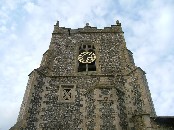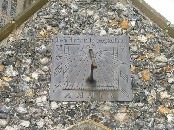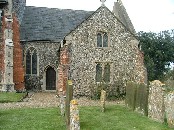| |
|
St Peter
and St Paul, Scarning
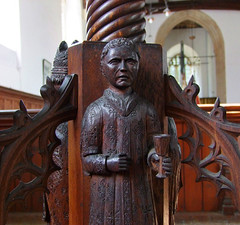 |
|
Most
East Anglian churches are open every day, but
there are sticky areas and this is one of them.
At least Scarning church has a keyholder now,
although the process of obtaining the key was
somewhat convoluted, mainly because the natives
were so friendly. The keyholder was out, but a
man in the street directed us to where he thought
the keyholder might be. It turned out that he
wasn't, but a lady there pointed us in the right
direction. The keyholder was a very affable chap,
although he was at pains to make sure we didn't
see where he took the hidden key from. However,
when we took it back he quite happily replaced it
in its hiding place while chatting to us, so
either we looked decidedly dodgy when he first
set eyes upon us, or he forgot that he was meant
to be keeping it a secret. But I digress. Scarning
church sits on the main road into the town of
Dereham ('The Heart of Norfolk!') but it
is an attractive church despite the busy road,
and there is an intriguing two-storey transept to
the chancel. Mortlock dates this to the 1570s,
the lower storey a vestry and the upper storey as
a residence for the minister, and it does have
the familiar Tudor look about it, although I'm
not convinced about the residence. A schoolroom
seems more likely. Pevsner went for the 19th
century restoration of the chancel, pointing to
the slightly odd tracery of the east window as a
companion piece, but his revising editor Bill
Wilson has put him right on this..
|
The tower
is dated by successive bequests to the very eve of the
Reformation - and then almost beyond, because Bill Wilson
notes one Thomas Secker leaving money in 1547 as a
bequest as the new werk goethe forwarde on the tower.
Presumably the death of Henry VIII that year put an end
to this, as the protestant reformers' gloves came off,
and bequests became a subject of suspicion of idolatry.
You can easily imagine that his widow had Edward VI's
Thought Police knocking on her door as her husband looked
down in distress from purgatory. Heartless times.
The most
striking impression on stepping into the church is of the
clear, wide, light nave, with a shadowy chancel beyond.
It is an attractive juxtaposition. The 13th Century
square font shows the flourishing of English art as we
moved out of the Norman period. Its cover is a
beautifully colourful piece, mostly 17th Century I should
think, though there are later elaborations. The east end
of the nave is beautifully done, with red and white
chequerboard paving and a big holy table serving as the
nave altar.
| The
lectern is a curious piece, at once rustic and
elaborate with its gothic tracery and
cartoon-like figures of the orders of the church
around its base. Behind, the chancel's gloom
beyond the screen is an atmospheric backdrop,
full of mystery. The screen is a good one, the
upper parts as bubbly as lace, the whole thing
recoloured dramatically. The sanctus bell is
still in situ on the south side, although this is
probably a modern reconstruction. You step
through into the chancel which owes all of its
presence to the windows of William Wailes, that
mid-19th Century master of shadowy stained glass
intricacy. Enthusiastic Latin scholars
will be detained for more than a while by the
elaborate inscription to Maria Burton, who died
on New Year's Eve 1710. The brass on which it is
inscribed looks as if it might actually have been
a coffin plate. Nearby, the memorial to Edward
Games, an infant sonne of John Games of
London Esq who died 14 Maii 1623, features
the little fellow lying in death, his head on a
skull. He was just twelve hours old. Beneath him
is a funerall elegie on the death of Edward
Games, a long and elaborate tribute to one
so tiny. O cruell fate that robdst a doleful
mother!
|
|
 |
Simon Knott, May 2015
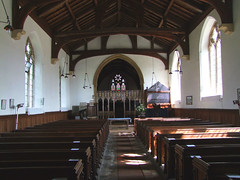 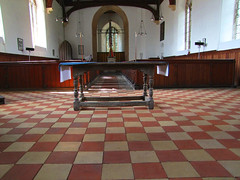 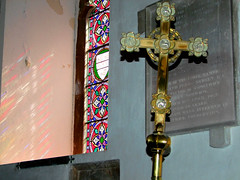 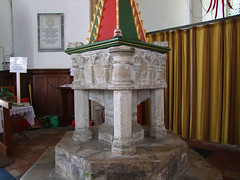 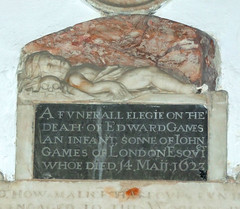  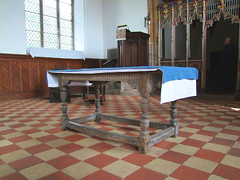 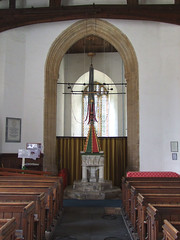 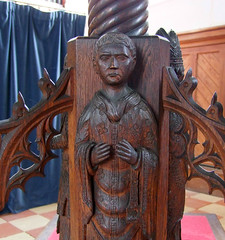 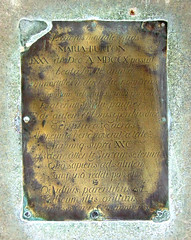  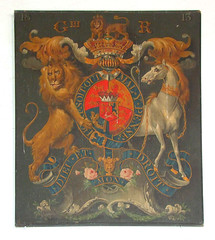 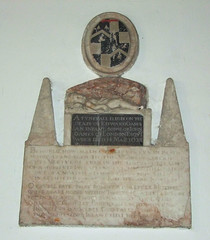 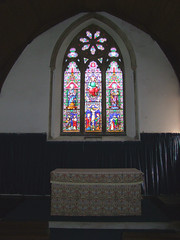  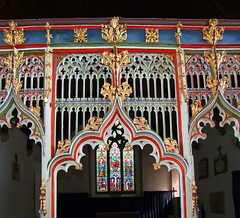

|
|
|

